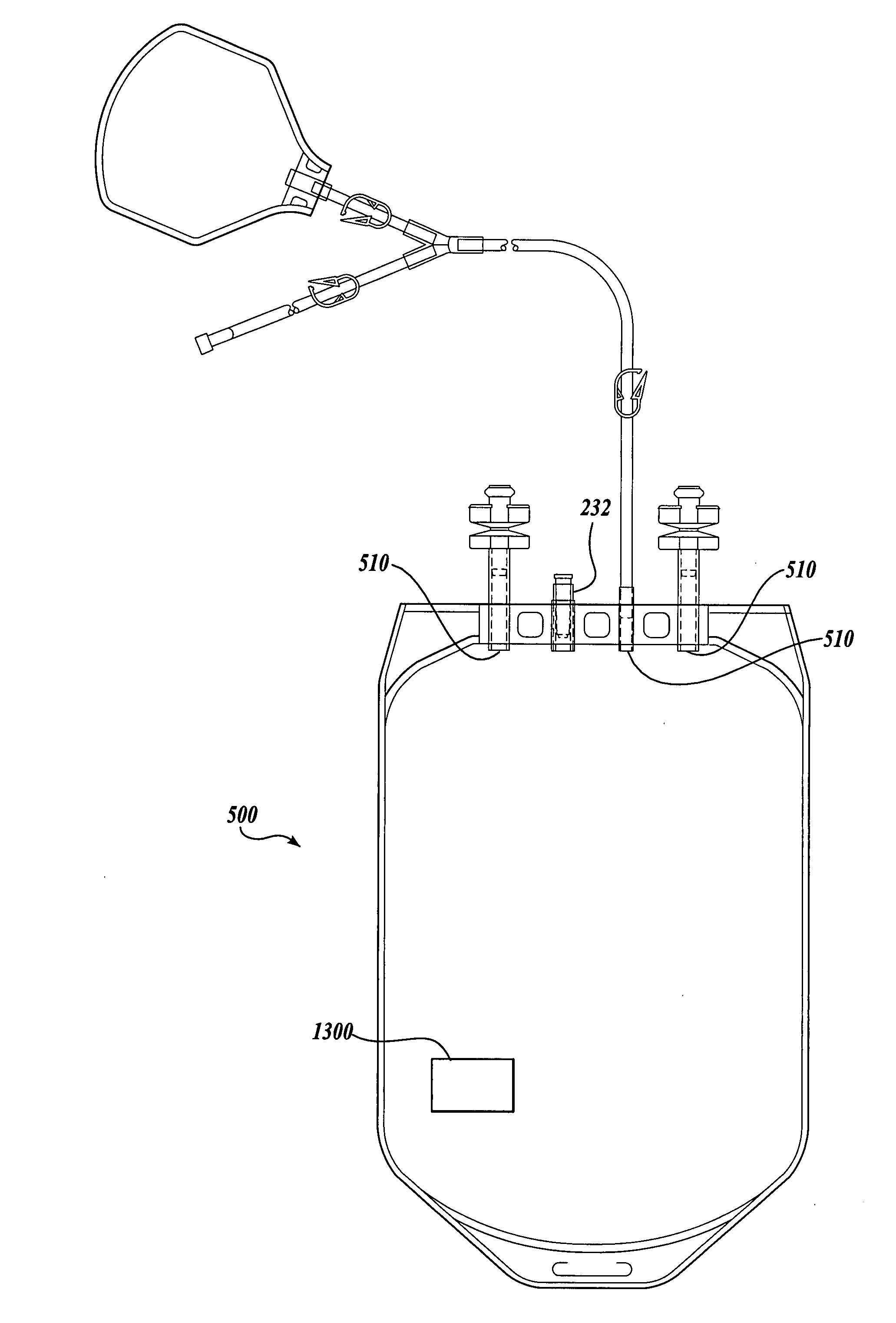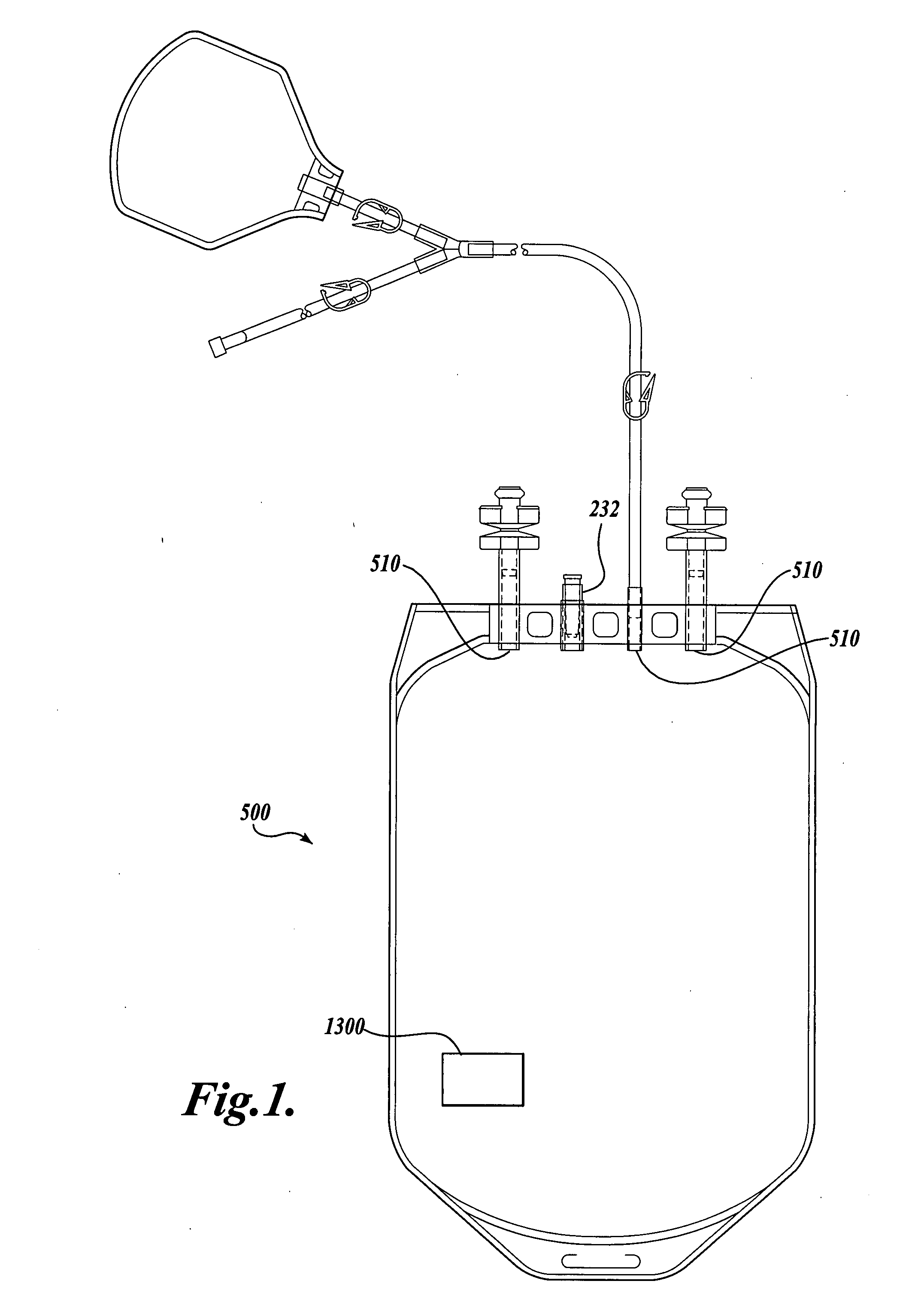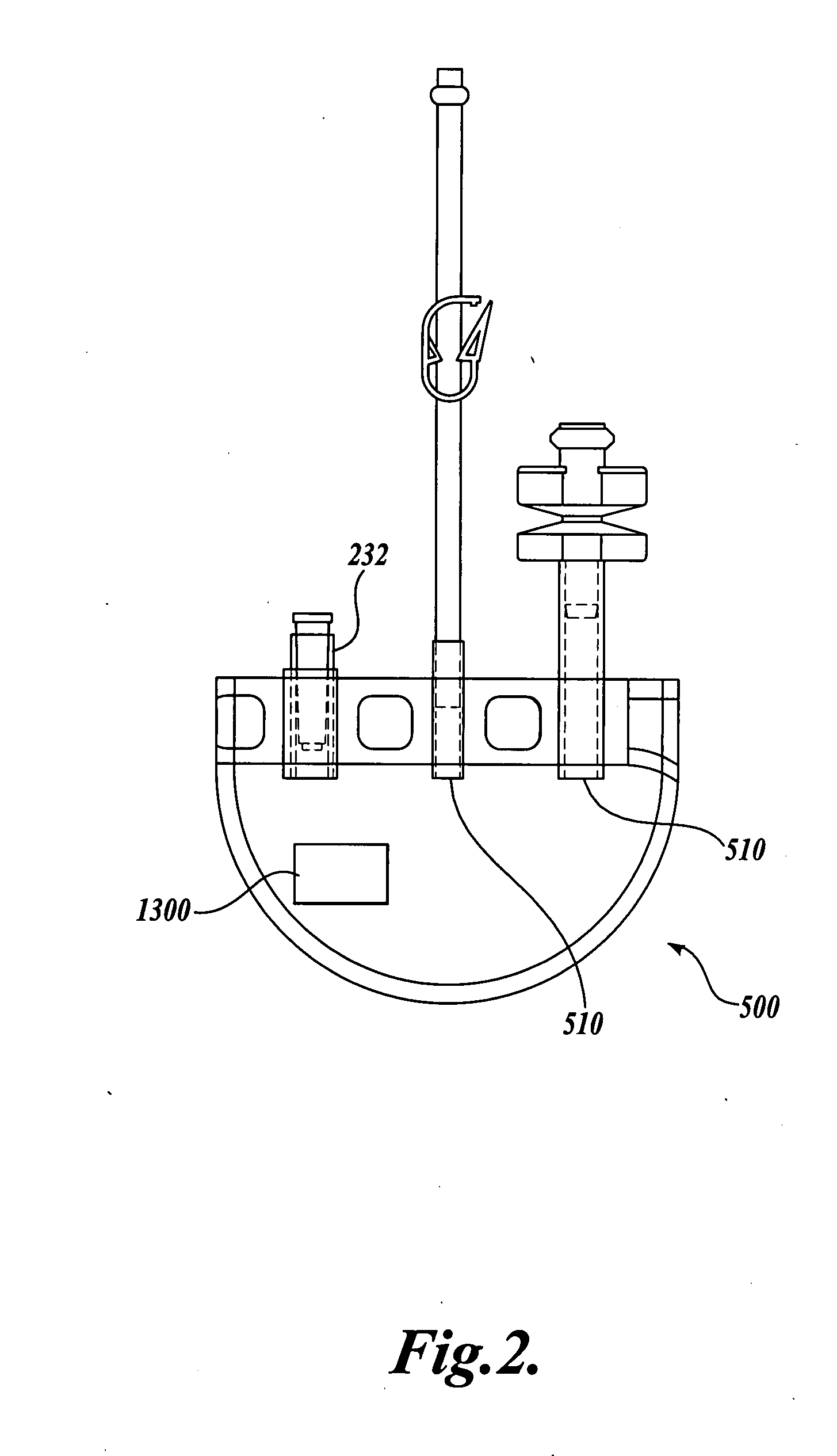Fluorescent detector systems for the detection of chemical perturbations in sterile storage devices
a detector system and detector technology, applied in the direction of chemical methods analysis, instruments, analysis using chemical indicators, etc., can solve the problems of limiting the sensitivity and specificity of this method, difficult to store pcs with high platelet counts, and easy use of indicators
- Summary
- Abstract
- Description
- Claims
- Application Information
AI Technical Summary
Benefits of technology
Problems solved by technology
Method used
Image
Examples
example 1
The Preparation of Representative Fluorophore-Protein Conjugates
EBIO-3 / HSA
[0258] Method A. A 0.1 M stock solution of EDC (Sigma / Aldrich Chemical Co., St. Louis Mo.) was prepared by dissolving 6.2 mg of EDC in 0.2 mL of DMF and 0.123 mL of 50 mM phosphate buffer (pH 5.8). 1.0 mg of EBIO-3 acid (Nanogen, Bothell, Wash.) was dissolved in 0.102 mL of DMF to give a 20 mM solution. 3.0 mg (0.045 micromoles) of HSA (Sigma / Aldrich Chemical Co., St. Louis, Mo.) was dissolved in 0.3 mL of pH 8.5 sodium bicarbonate in each of two 1.7 mL Eppendorf tubes. 0.1M EDC (0.045 mL) was added to 20 mM EBIO-3 (0.045 mL, 0.9 micromoles) in a separate Eppendorf tube and this was added to one of the HSA tubes to give an EBIO-3:HSA offering ratio of 20:1. An offering ratio of 5:1 was used in the other HSA tube by adding a premixed solution of 0.0225 mL of EDC (0.1 mM) and 0.0225 mL of EBIO-3 (20 mM). The homogeneous dark red HSA conjugate solutions were incubated at room temperature in the dark. After 21 h...
example 2
Immobilization of Representative Fluorophore-Protein Conjugates
EBIO-3 / HSA
[0260] Spotting Immobilization Method. EBIO-3 / HSA conjugate was prepared as described in Example 1 at a ratio of 2:1. Nitrocellulose membranes were obtained from Schleicher and Schuell under the trade name PROTRAN. The discs were treated in the same way as the general immobilization method described in Example 14 using a 4 mg / mL solution of EBIO-3 / HSA.
[0261] Soaking Immobilization Method. EBIO-3 / HSA conjugate was prepared as described in Example 1 at a ratio of 2:1. Mixed ester nitrocellulose and cellulose acetate membranes were obtained from Millipore under the product series TF. The EBIO-3 / HSA conjugate is diluted to 0.2 mg / mL and 45 mL is added to a 9 cm disc of the membrane. The disc is agitated overnight at room temperature and protected from light. The unbound conjugate is removed and the disc is washed with two 1 hour washes and one overnight wash all with agitation. The disc is then desiccated and st...
example 3
The Manufacture of a Vessel Incorporating a Representative Substrate-Immobilized Fluorescent Species
[0262] PVC material is compounded with a number of additives, for example, plasticizers, stabilizers, and lubricants. The formulation is used for making bags and tubes. The compounded PVC is extruded through a die or calendared in a press for converting the plasticized material into sheet form. The extruded sheet, after slitting, is cut into the desired size and sent to the welding section. The donor and transfer tubings are made by extrusion of similar PVC compounds. The tubes are then cut to the appropriate length and sent to the welding section. The components, such as transfusion ports, needle covers, and clamp, are produced by injection molding. The components are ultrasonically cleaned and dried in a drying oven.
[0263] Welding. The blood bags are fabricated by a high frequency welding technique. Sized PVC sheets are placed between electrodes and high frequency at high voltage ...
PUM
| Property | Measurement | Unit |
|---|---|---|
| Time | aaaaa | aaaaa |
| Time | aaaaa | aaaaa |
| Time | aaaaa | aaaaa |
Abstract
Description
Claims
Application Information
 Login to View More
Login to View More - R&D
- Intellectual Property
- Life Sciences
- Materials
- Tech Scout
- Unparalleled Data Quality
- Higher Quality Content
- 60% Fewer Hallucinations
Browse by: Latest US Patents, China's latest patents, Technical Efficacy Thesaurus, Application Domain, Technology Topic, Popular Technical Reports.
© 2025 PatSnap. All rights reserved.Legal|Privacy policy|Modern Slavery Act Transparency Statement|Sitemap|About US| Contact US: help@patsnap.com



